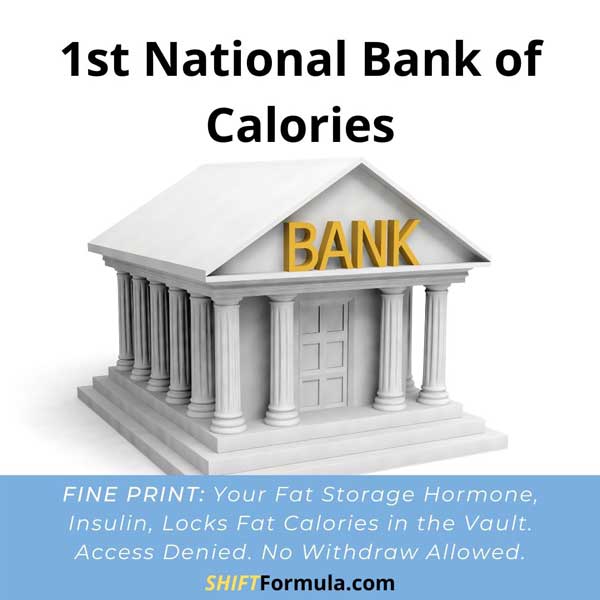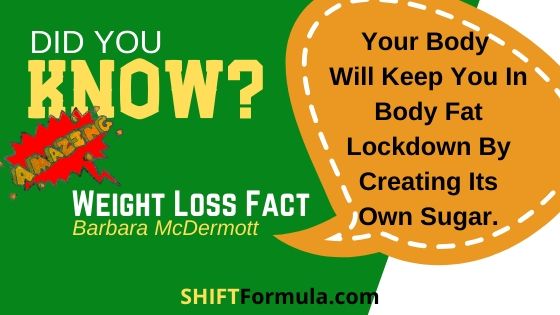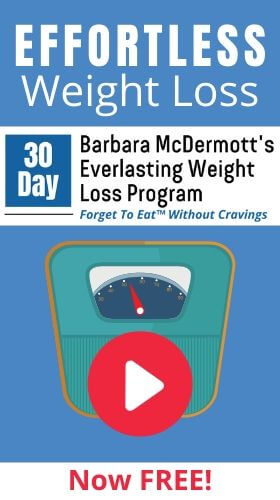If you are an intermittent fasting beginner or thinking about using intermittent fasting for weight loss, in this article we’re going to discuss some of the pitfalls of fasting and most importantly, how to do intermittent fasting the right way.
Here’s What We Cover in “Intermittent Fasting Beginner | The Good, Bad & UGLY”
Click On Any Topic Below To Scroll Directly To It:
1.) Watch: Intermittent Fasting | The Good, Bad & UGLY
2.) The Insanity Of Using Exercise For Weight Loss or Weight Management
3.) The Ugly Way To Intermittent Fast
5.) The Bad Way To Intermittent Fast
6.) The Intermittent Fasting Secret | How To Avoid The Bad & Ugly
7.) The Intermittent Fasting Beginner – Recap
8.) Listen To The Forget To Eat™ Podcast of: Intermittent Fasting, The Good, Bad & UGLY
Intermittent fasting is trending big in today’s world. When we recorded this as an episode on our Forget To Eat™ Podcast it was the day before Thanksgiving in the U.S.
And, we know from our past history as Health Club owners that when it comes to the feasting that goes on during the holiday season, most people try to battle it or balance it out with activity. Exercise!!
It seems like everyone’s running, or participating in the community Turkey Trot race. There’s the Turkey Burn classes going on at the local health club. And cross-fitters are getting in the extra cross-training sessions.
Do you ever find yourself in compensation efforts during the holidays? You know, trying to burn off the turkey? I have to chuckle because the turkey isn’t the food item we need to be concerned about. It’s all those love-heaped family tradition side-dishes that torment and over-burden a body struggling with weight and weight-related health issues.
Watch: Intermittent Fasting | The Good, Bad & UGLY
Please share the “Intermittent Fasting Beginner” with your friends and family by clicking a social media buttons below:
The Insanity Of Using Exercise For Weight Loss or Weight Management
Attempting To Outrun Caloric Intake Is Simple Insanity
Few realize that the calories they’re so desperately trying to rid themselves of are actually trapped on their body. They can run in circles all day long and be unable to access the body fat they’re lugging around. It comes down to one specific-fat-trapping hormone, not total calories. And even if our fat-trapping hormone was low enough for us to be able to burn through some of our belly fat, the amount of energy required to work off the typical holiday feast is staggering.
Just recently I was working out at the local gym and I overheard, (it’s a really small gym), a trainer talking to his client about, running an extra 30 to 45 minutes to cover for a slice of pie at tomorrow’s Thanksgiving dinner.
But that doesn’t work. It just doesn’t work.
You Don’t Want To Burn Just Calories, You Want To Burn FAT Calories
The client is currently in a weight crisis. The client, I’m sure, has not been educated on insulin suppression. He has no idea that all his running is futile for the weight loss he’s seeking.
His hormonal environment has him trapped in burning through glucose or sugar calories. Burning through fat calories is not an option due to his insulin state.
Now, when we were young and metabolically robust and our body required lots of fuel we enjoyed a huge advantage. Our insulin release was minimal back then. We hadn’t yet developed any degree of insulin resistance. Insulin was less.
Remember, insulin is your body’s chief fat storage hormone.
If you’re currently gaining weight or unable to shed weight, it’s your insulin levels that are to blame.
It was only in our youthful years that we could employ, to some degree, the ‘calories in’, ‘calories out’ method because insulin persistence hadn’t caught up and hijacked us yet. The presence of insulin locks you in burning sugar calories, not fat calories.
So, let’s cut to the chase. We want to burn fat, right?

1st National Bank of Calories?
Where calories are concerned, your body is like a bank. Food calories pour in.
But food calories, like money, change form. And the body fat bank guard, insulin, will not allow you to withdraw fat…. only sugar.
Your Fat Storage Hormone Insulin Does Not Allow Body Fat Withdraws
Insulin locks body fat.
It’s also critical to know that glucose calories from the carbohydrate-lopsided, and love-based side dishes, convert to body fat.
Those carbohydrate foods trigger insulin surges. Insulin surges keep you burning sugar, craving more sugar, and completely block your body’s ability to access body fat for burning.
The Sugar-Burning Cycle of Insanity
You are virtually trapped in what I call, the Sugar-Burning Cycle of Insanity. If you think you’re going to burn up body fat calories without addressing insulin you just might go insane with all the trying.
It’s the perfect example of the definition of insanity: doing the same thing and expecting a different result. Not gonna happen.
So to summarized, there are different forms of calories. And for weight loss, it’s the fat we want to lose. And in order to do that, insulin needs to be low enough so your body fat stores are released and able to be used as fuel for energy.
Your power is the realization that running around in circles is not going to release body fat IF your insulin levels are elevated.
That’s the difference between insanity and shifting. SHIFTing your internal environment is THE key.
Working smarter not harder.
Speaking for ourselves, we’re in our late fifties and we don’t have to run ourselves into the ground to manage our weight. And with age comes increased risk of injury, right? Your body can only take so much abuse.
Once you understand and wield your insulin-suppressing superpower, you have the key to your health kingdom.
Balancing Holiday Feasting With Fasting
And then holidays and feasting can be enjoyed and even indulged in when you know how to balance it out. One means of balancing feasting is with its polar-opposite, fasting.
We can easily, easily balance out the feasting with intermittent fasting which is catching on in the world today.
And if you are interested in fasting for weight loss or are an intermittent fasting beginner, it’s important for your success that you understand that there is a good way, there’s a bad way and there’s an ugly way to implement a fast.
The Ugly Way To Intermittent Fast
Let’s start with the ugly way to fast for an intermitting fasting beginner or anyone attempting to lose weight by fasting.
So, first off fasting means periods of not eating.
The ugly way to fast, in my book, is when we force or ‘cold turkey’ a fast.
The Problem With Fasting as a Sugar Burner
Fasting when our body is still trapped in sugar burner mode can be problematic. And a very unpleasant experience to say the least. If your body has not been enabled to burn fat or reintroduced to burning fat, you will remain in sugar-burning.
You’ll know you are in sugar-burning by your cravings. Cravings are not true hunger. Cravings are mental and emotional and chemical ravings for glucose. That’s carbohydrates. That’s sugar.
Any form of carbohydrate is sugar. Even the precious plant foods like fruits, grains, and vegetables. All of it is sugar to the body.
So, if you’re not eating for a whole day and thanks to insulin are unable to burn body fat, guess what?
Watch: How To Avoid The Big Mistake of Intermittent Fasting
Your Body Will Keep You In Body Fat Lockdown By Creating Its Own Sugar
Your body is going to initiate something called gluconeogenesis. Rather than shifting from burning sugar to burning fat, your body will make sugar to compensate for your not consuming sugar.
Your body will make sugar/glucose from your protein stores.
That means all those muscles you’ve been working so hard to maintain as you age are compromised. Your body will strip protein from your muscles and convert that protein to sugar.
So during your fasting day, you think it’s all about creating a calorie deficit, but odds are good you’re muscle wasting.
Funny. Less muscle mass shows up on a scale as weight loss. But is losing muscle the weight you were seeking to lose?
Creating a calorie deficit can be an excellent health move. However, what do we really want to do?
We want to be able to USE body fat. When you fast once in a while and you don’t eat anything to properly support that fast, you can very easily succumb to protein wasting or muscle wasting.
So, that is the absolute ugly way to intermittent fast. And so many intermittent fasting beginners have no idea their fast is doing them more harm than good.
Here’s why…
As we get older, our muscles are like our gold. Muscles are like blocks of gold because they house the most plentiful volume of mitochondria. Those of us who have a higher density of muscle have a far easier time staying younger and keeping body fat from accumulating than those who have less muscle.
Your quantity and quality of mitochondria are what drive your body’s ability to handle what you eat. More muscles? More eating leeway. Less muscles? Less eating leeway.
So obviously we want to do everything we can to retain muscle.

Muscles Act As Sugar Sponges
Think of muscle as sugar sponges or glucose sweepers. All the carbs you eat end up as sugar in your blood. That sugar in your blood will end up as fat around your waist.
But, muscles can intercept this pathway. Muscles sponge up or sweep the sugar out of your bloodstream and use it for energy.
Mitochondria are the powerhouse of the cell. The more muscle, the more mitochondria, the more management power we have over whether we accumulate body fat. If you don’t wish to accumulate body fat, muscles are your means.
The more muscle you have, the, the easier it is.
Regulating blood sugar requires using it up. All that sugar in your blood from your carbohydrate-focused meals must be used up by muscle.
And once we reach age 30 on average, we lose muscle naturally. On average, we lose about a pound of muscle mass a year. So……
Natural Muscle Loss After Age 30 Makes Managing Weight Gain and Controlling Blood Sugar Harder and Harder
Yes, on average we naturally lose one pound of muscle mass per year starting around age 30.
This is why for many individuals, diabetes creeps in around age 50. Think about it. By age 50 we’ve lost a significant volume of our blood sugar sponging / sweeping muscles. That’s 20 – 30 pounds of muscle lost versus when we were 20 something.
That means, we’ve lost 20 – 30 pounds of our built-in sugar sponges.
So now, with the lack of muscle to use the excess sugar circulating in your blood, that sugar that in the past was used by your muscles for energy, now ends up around your waist as belly fat.
How Diabetes Creeps In…
And as we age, hitting our forties and early fifties, diabetes creeps in. Why?
Because blood sugar fuel is no longer in demand. We don’t have the muscles burning through the blood sugar like we had in the past.
In addition, we’re probably not as active as we had been which also used up the extra sugar.
So even if we’re eating the same healthy foods as we were in our twenties it’s not going to work out for us. We’re going to accumulate more sugar in our bloodstream and around our waist. We’re going to secrete and circulate more insulin.
And when insulin flows metabolic syndrome grows.
Again, important to know…
Blood sugar becomes our belly fat if we’re not using it up for energy. And muscles are the means for using up blood sugar.
But fasting without being SHIFTed into fat burning by addressing insulin secretion means muscle wasting.
If your body isn’t set up to be able to tap into body fat stores, you will tap into protein stores. If you’re just fasting once in a without addressing insulin, chances are pretty darn good that you’re going to be muscle wasting. And if you’re over 30 years old, you’re already muscle wasting naturally.
Fasting warriors beware. If fasting involves sacrifice and will-power you’ll most likely be muscle wasting with very little body fat burning.
The Bad Way To Intermittent Fast
You know you’re trapped in sugar burning when you’re fighting cravings.
Sugar burners find it hard to fast. It’s unpleasant, to say the least.
This leads us on to the ‘bad’ of intermittent fasting. Muscle wasting is ugly because rather than fasting serving our health, it actually promotes further complications.
Tearing down our muscle propels us even faster into weight gain.
The next fasting snafu is not knowing that your body will not only adapt but will overcompensate against your efforts. When your body senses that its fueling has been downgraded, your metabolic rate will lower as an adjustment to balancing energy intake with energy output.
Fasting sugar-burners experience energy crashes. Fatigue. Lethargy. Even degrees of ‘not well’. This is not how fat-adapted fasting feels.
Unpleasant fasting happens to those who are unable to tap into their body fat.
Intermittent Fasting With Energy Powered By Body Fat
But when you address insulin, you can access body fat, and even while fasting your energy is more than sustained. Running on body fat is exhilarating. And possible….
As long as you know a thing or two about insulin.
So the UGLY is… muscle wasting.
The bad is having your metabolic rate adapt to your fasting by slowing down and upon the end of your fast your overcompensation mechanism kicks in ensuring you accumulate even more weight than you may have lost.
The Peril of Haphazard Fasting
Haphazard fasting is an action that will not actualize what you desire. It could prove to be the very action that ensures weight gain, not weight loss.
Has this ever happened to you?
You’re watching, you’re dieting, you’re fasting, you’re counting, you’re controlling, you’re hoping and then three weeks later when you’ve begun eating again, “good grief, why is this inner tube around my middle?”
What the #@&$ is that?
That’s our insulin belt. Blood sugar was distributed thanks to insulin and is now carried as waist weight.
The insulin belt. When we don’t understand where the fat comes from, when we don’t understand the muscle wasting and the compensating that goes on, we end up in repeated failure.
And oftentimes even further compromised than before. If we are trapped in insulin-stimulated weight gain, the weight gain will continue and continue.
So, for the intermittent fasting beginner or for anyone who wants to get the best results from intermittent fasting, to be in the ‘good’ category requires a little knowledge.
The Intermittent Fasting Secret | How To Avoid The Bad & Ugly
Did you know that your body can be fasting while you’re still eating?
Let me rephrase that. You can reap the benefits of fasting, minus the drawbacks like muscle wasting, energy crashing, and weight re-gaining, and not be not eating.
It all comes down to insulin.
You can eat in such a way as to maintain low insulin. When your insulin level is low, body fat burning is a “go”.
Fasting happens when insulin level drops.
Sure, we can make that happen by not eating. But, we can also make it happen when we are eating. That’s how you win. You just know a thing or two about glucose and insulin.
When you know how to manipulate glucose and insulin you can fast like a champ.
You fast basically every day because you’re just not hungry. How?
Why would you be not hungry?
Because when insulin is low enough to allow your body to “dine in” on its fat stores, appetite diminishes. Appetite diminishes because your body has more than enough fuel to satisfy its energy requirements.
And cravings?
Those are the scourge of your previous sugar-trapped self. You don’t live there anymore.
And then when feasting holidays like Thanksgiving come along you initiate some degree of cravings-free, effortless fasting before and after. The holiday weight gain fear is erased for good.
And you have certainty.
The Intermittent Fasting Beginner – Recap
To recap: Ugly fasting means muscle wasting.
Muscle loss virtually guarantees weight gain. Not cool!
Bad fasting means metabolic downshift and fat re-accumulation upshift. Not cool!
But good fasting is smart, insulin suppressing, hunger-free body fat burning. Very, very cool.
If you want to dive deeper into this topic, and get our free fasting guide? Click Here.
Listen To The Forget To Eat™ Podcast of: Intermittent Fasting, The Good, Bad & UGLY

About Barbara McDermott
Regarded as America's #1 Insulin Suppression Coach, Barbara is the co-founder of SHIFT Health & Wellness Solution, and the best-selling author of the groundbreaking book, ‘FOOD B.S.’, With SHIFT, Barbara brings common sense to nutrition, weight loss and health gain. Her refreshing, no nonsense approach to uncovering the truth using non-negotiable rules of science demystifies food and how to defeat chronic disease once and for all.




No comments yet.